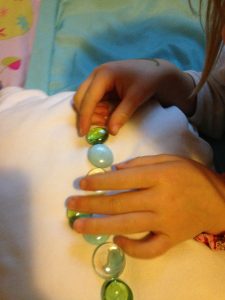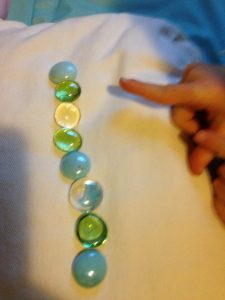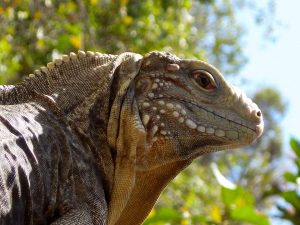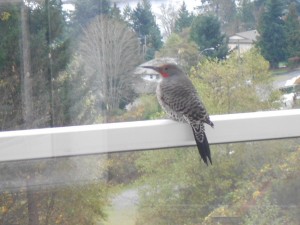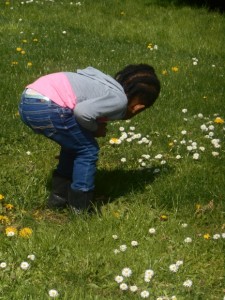Whether you do this resolution for just a few days or longer, patterns grow thinking. When we either look for patterns or make them, brains get a workout. Sometimes, bodies too.
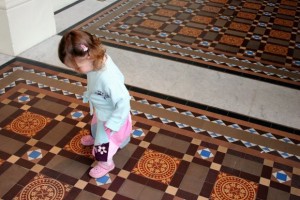
Patterns can be pictures, sounds, words or other information that repeat in the same order. Songs each have a unique pattern. Every language will have particular ones too. Patterns can also be found in nature. This is a simple one: black/white, black/white.
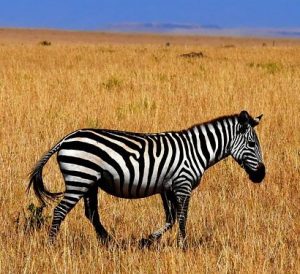
Do you remember how exciting it was as a child to discover a shortcut? Actually, as adults it’s still a great feeling to find one. Well, that happens when the brain finds a pattern. A pattern is like a short-cut to figuring out information. Suddenly, instead of having to loop around, up, down, in and out, the brain hops onto the pattern-shortcut and can skip to the end.
Following, is part of some play time with train blocks. Little Sister and I have fun with patterns. The pattern makes the job easier. Being able to notice, figure out and make patterns is a powerful thinking strategy for kindergarten readiness and beyond.
When a 3-year old was playing trains, I lined up a few cars in a simple pattern: red-blue, red-blue. I said each color and pointed to the cars. I spoke to the train cars and told them they were making a pattern, first red then blue, then red and blue again. Then I asked the child what color would come next and together we figured out a red one. The child was able to say blue would come after that but then playing changed to putting blocks on the cars.
Noticing and making patterns are skills that grow from experience and practice. One of children’s earliest experiences with patterns is learning how to crawl. First one hand and knee move, and then the others, over and over. Faces have a pattern, with two eyes on top and a nose in the middle. Parents and caregivers find life a lot easier when babies settle into a pattern of day and night.
Kids are able to accurately say what comes next in a pattern string before they create their own patterns. Some ways to include patterns in a day could be walking along in a pattern, such as walk, walk, walk, walk, jump. Discover patterns on clothes when helping kids get dressed; a shirt may have stripes in the same order. Find patterns inside on walls and floors. Look for some in nature too. Make a pattern at snack time on a plate and eat it up; slice of banana/slice of strawberry, slice of banana/slice of strawberry. Read a book with parts of the story repeated, like The Gingerbread Man. Talk a pattern outloud. For instance, when setting the table say plate/bowl/spoon, plate/bowl/spoon. You can get mixed up and say fork. Kids love to correct grownup mistakes.
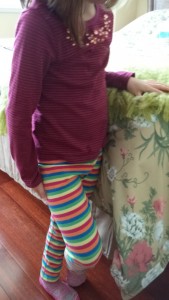
Patterns grow thinking in other ways too. Sing lots of songs. The Wheels on the Bus has a different character or part of the bus each time but the same pattern. Make patterns when playing with toys. Color some with art tools. Together, you’ll be able to notice and make other patterns.
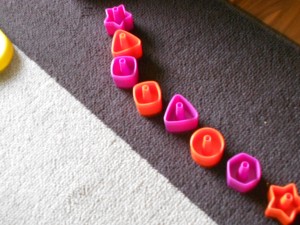
Patterns grow thinking strategies and skills. Just in case you think they are not important, stock traders invest time and money into predicting trends and businesses investigate patterns constantly. Patterns are powerful; can you and your child play with some today?

